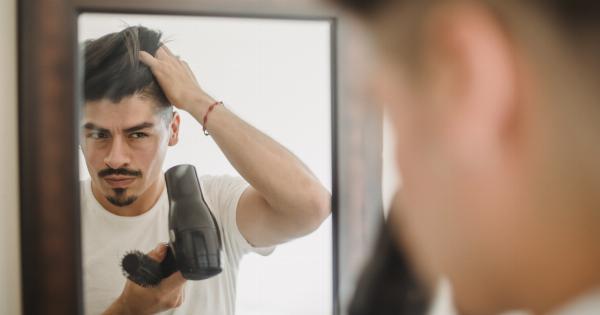A hair transplant is a surgical procedure that involves removing hair follicles from one part of the body, known as the donor site, to a balding or thinning area of the body, known as the recipient site.
This procedure can help restore hair growth in individuals experiencing hair loss or thinning.
Types of Hair Transplants
There are two main types of hair transplants:.
1. Follicular Unit Transplant (FUT)
In a Follicular Unit Transplant (FUT), a strip of scalp containing hair follicles is surgically removed from the donor site, usually at the back or sides of the head.
The strip is then divided into smaller grafts, each containing one to four hair follicles, and transplanted into the recipient site.
2. Follicular Unit Extraction (FUE)
Follicular Unit Extraction (FUE) involves individually extracting hair follicles from the donor site using a specialized punch-like instrument. These follicles are then meticulously transplanted into the recipient site.
Eligibility for Hair Transplants
Not everyone is a suitable candidate for hair transplants. The eligibility criteria may vary depending on the surgeon and the technique used. However, some general factors that may affect eligibility include:.
1. Sufficient Donor Hair
There should be an adequate amount of donor hair available for transplantation. The density and quality of the hair in the donor area play a vital role in determining the success of the procedure.
2. Stable Hair Loss
It is important that the individual’s hair loss has stabilized before considering a hair transplant. If hair loss is still progressing, additional procedures may be required in the future to address newly affected areas.
3. Realistic Expectations
Patients must have reasonable expectations from the procedure. While a hair transplant can significantly improve hair density, it may not restore hair to its pre-hair loss state.
The Hair Transplant Procedure
The hair transplant procedure typically involves the following steps:.
1. Consultation and Evaluation
Prior to the surgery, the patient meets with a hair transplant surgeon who evaluates the scalp, discusses expectations, and determines the appropriate technique.
2. Donor Site Preparation
In FUT, the surgeon trims the hair in the donor area and administers local anesthesia to numb the scalp. The strip is then surgically removed and the area is sutured. In FUE, the donor area is shaved, and local anesthesia is administered.
3. Graft Preparation
Under a microscope, the strip of scalp or harvested follicles from FUE are divided into individual grafts, ensuring each graft contains hair follicles along with supportive tissues.
4. Recipient Site Creation
Tiny incisions or slits are made in the recipient area using a specialized needle or blade. The surgeon follows the natural hairline and ensures angulation and directionality match the existing hair.
5. Graft Placement
The individual grafts are carefully placed into the recipient sites, considering the natural hair growth pattern and density. The surgeon may use forceps or a similar tool to ensure proper placement.
6. Post-Procedure Care
After the surgery, the patient is provided with instructions on how to care for their scalp, including post-operative medication, gentle washing, and avoiding strenuous activities that may disrupt the healing process.
Recovery and Results
The recovery time for hair transplants varies from person to person. The transplanted hair may initially fall out, but new hair growth typically begins within a few months. It may take several months to a year for the full results to become evident.
Possible Risks and Complications
While hair transplants are generally safe, it is important to be aware of potential risks and complications, including:.
1. Infection
Infection can occur at the donor or recipient site if proper care and hygiene are not maintained post-surgery.
2. Bleeding
Some bleeding may occur during the surgery or in the immediate post-operative period.
3. Scarring
In FUT, a linear scar may be left at the donor site. In FUE, tiny dot scars may be visible in the donor area, but these generally fade over time.
4. Poor Growth or Unnatural Appearance
In some cases, the transplanted hair may not grow properly or may have an unnatural appearance. This can often be improved with additional procedures.
5. Shock Loss
Shock loss refers to the temporary loss of existing hair around the recipient site following the transplant. It is usually a temporary condition, and the hair gradually regrows.
Cost of Hair Transplants
The cost of hair transplants can vary significantly depending on various factors, including:.
1. Technique
FUT may be relatively cheaper than FUE due to differences in the surgical process and time required.
2. Surgeon’s Experience and Reputation
Highly skilled and reputable surgeons may charge more for their services.
3. Location
The cost of the procedure may vary based on the geographical location of the clinic or hospital.
4. Number of Grafts
The total number of grafts required directly affects the cost. More extensive hair loss will require a higher number of grafts.
Conclusion
Hair transplants can be a promising solution for individuals experiencing hair loss or thinning. It is essential to consult with a qualified hair transplant surgeon to determine eligibility, discuss expectations, and understand the procedure fully.
With proper care and realistic expectations, a hair transplant can help restore confidence and improve overall appearance.

























